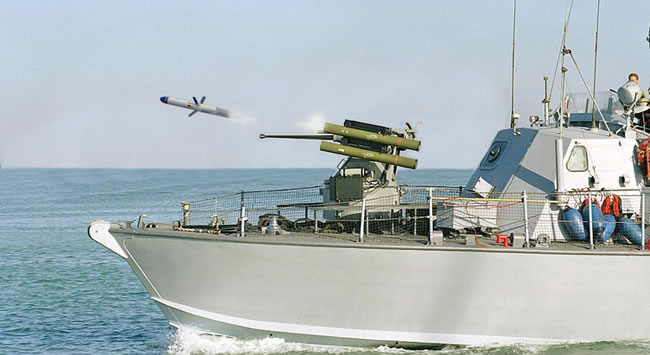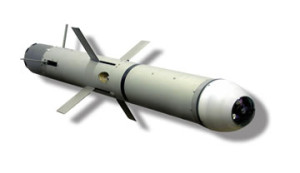

After decades of relying exclusively on laser and GPS for precision attack, the military and US special operations community is slowly opening to consider Electro-Optically (EO) guided weapons, gaining strike precision at extended range. In a recent test conducted by NAVSEA, six Spike EO guided missiles were launched from an USV-PEM unmanned boat, engaging targets 1.9 nautical miles (3.5 km) away. Such capabilities will further develop as EO guidance techniques become feasible and affordable, relying on matured image processing techniques, Micro-Electro Mechanical Systems (MEMS), miniaturized imaging sensors, navigation and communications derived from commercial off the shelf technologies.
This trend is correlated with a shift in military focus, from traditional linear battles toward asymmetric warfare. Different from the hardened, well-protected and distinct military targets of the past that could be neutralized by massive penetrating warheads today’s targets are vulnerable, yet illusive. They lack distinct signatures pursued by automatic target recognition, but are clearly recognized by the human operator, hence, bringing back ‘man in the loop’ control. Such control has been realized as imperative for modern asymmetric warfare, facilitating maximum flexibility in seizing short term opportunities while eliminating engagement of innocent people which the enemy often use as ‘human shields’, when briefly exposed in the open.
[ismember]The most common precision attack methods employed in asymmetric engagements address two distinct guidance methods – Semi-Active Laser (SAL) and Electro-Optical guidance (EO). The first employs a target designator to mark the target being attacked by illuminating and marking the target for the weapon with a powerful, codded laser beam. The weapon is fitted with a nose-mounted laser seeker, guidance mechanism and means for course correction, navigating the weapon to home in on the laser spot. While this method is relatively simple from the technical aspect, closing a ‘loop’ between the ‘sensor’ and ‘shooter’ requires a complex and lengthy process, taking place at different geographic locations, representing multiple potential points of failure.
With typical accuracy of one meter, at least five times better than that of Global Positioning Systems (GPS) guided munitions, laser guided weapons have become the weapon of choice for asymmetric warfare. High accuracy means smaller warhead can be used to achieve sufficient lethal effect while reducing collateral damage effect. Admittedly, such high accuracy gained in perfect condition may not always be achieved under combat conditions, particularly in complex areas such as in urban, forested areas, or at sea, where reflections may degrade the seeker’s ability to maintain track. Laser guided weapon engagement from extended range is also an issue, as the divergence of the laser beam degrades the accuracy, therefore increasing the potential for error. Lastly, the use of laser beam to designate a target – although not visible – can be easily spotted and provide the enemy early warning of an imminent attack, triggering countermeasures and evasion that further reduces the probability of success.
Although electro-optical (EO) seekers are available since the 1960s, the US military, particularly the US Army and SOCOM were never too enthusiastic about them, despite their advantages. When considering EO, the Army were often seeking fully autonomous operation – fire and forget – which has not adapted well to the modern asymmetric warfare. In contrast, EO weapons employed with ‘man in the loop’ required higher skills. Such weapons have only recently being evaluated for possible use by the special operations community. [/ismember]
Outside the USA EO guided missiles became much more popular, with the Israeli Spike missile with its four variants leading the way for more than 20 armies worldwide, including the largest forces in NATO. Spike was developed and produced by RAFAEL Advanced defense Systems. This weapon offers the most advanced level of EO guidance, dubbed ‘4th Generation’. The Israeli Tamuz – also known as Spike NLOS, was fielded by the IDF two decades ago, became the first land-based missile to strap a thermal imaging sensor to enable the operator to ‘see’ the target from the missile’s point of view. For the first time, the lengthy and complex ‘sensor to shooter’ coordination cycle was reduced into minutes and seconds.
[nonmember]Subscribe or Log-in to Defense-Update read the full version of this analysis[nonmember][ismember]Initially, Tamuz was fielded by the IDF Artillery Corps as a decisive strike weapon, designed to crush enemy armored formations before they reach the front. Through years of asymmetric conflict in Lebanon, it evolved and optimized to engage illusive targets, fired from a distance of 25 kilometers, it enables the operators to gain situational awareness, acquire and verify their target, track moving targets, assess the situation around the target to prevent collateral damage and ensure the strike hits exactly at the right point.
Once launched, Tamuz is guided autonomously, but the operator has full control of the camera and flight path via datalink, enabling the operator to monitor the weapon’s camera, correct the aimpoint or switch to an alternate target. Through this unique and dynamic view operators gain important information on the target and its scene, as the weapon closes in, to make corrections or even abort the mission at the last moment, to avoid collateral damage. It also provides last second verification of the target being hit, for battle damage assessment. The main advantage of the Tamuz’s ‘Fire and Update’ mode is the high precision achieved regardless of the range, since the weapon relies on the scene obtains by the weapon’s sensor to determine the exact point of the target being struck.
Focused on laser and GPS guidance for its weapons, the US Army aimed at EO guidance as the ultimate ‘future generation’. Trying to achieve this goal with the development of a common ‘all in one’ tri-mode seeker the Army failed once and again, to combe imaging I2R, radio-frequency (millimeter-wave) (RF) and semi-active laser SAL – all in one compact package. This approach failed time after time, first with the Joint Common Missile, (JCM), the Precision Attack Missile (PAM) and most recently with the Joint Attack Guided Missile (JAGM) – all programs aimed at using tri-mode seekers and all were terminated.[/ismember]
The Spike developer RAFAEL considers the system should maintain its development course as an EO system – enhancing the system through the improvement phased improvements – introducing Miniature Electro-Mechanical Systems (MEMS), large matrix imaging sensors and versatile actuating systems enabling manufacturers to drive weapons cost to the level of laser guided weaponry, shrinking the size to introduce smaller and lighter precision weapons, and enabling the warfighters on land, at sea and in the air to carry out their missions much more effectively, while remaining safe at stand-off distance.

















